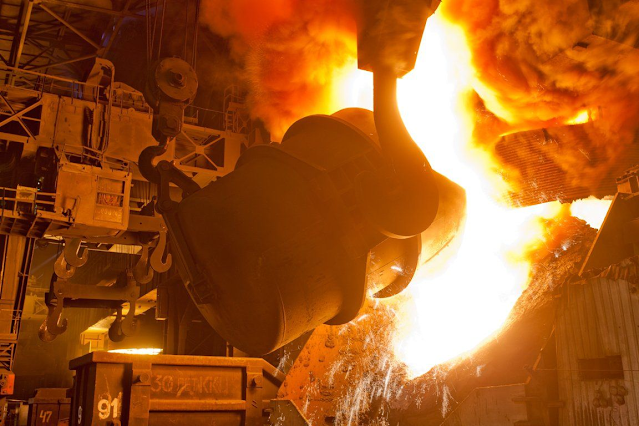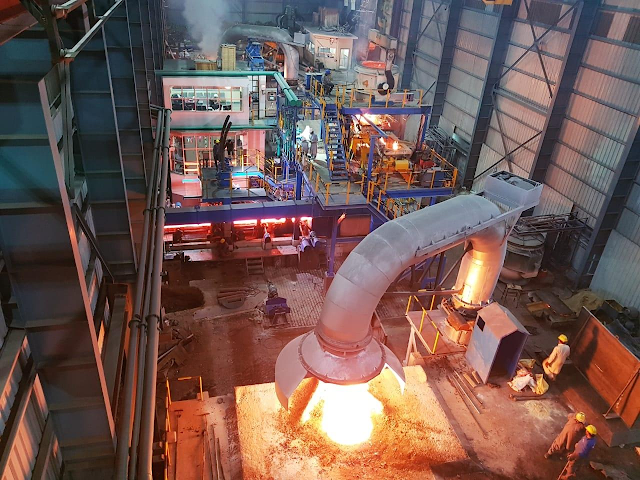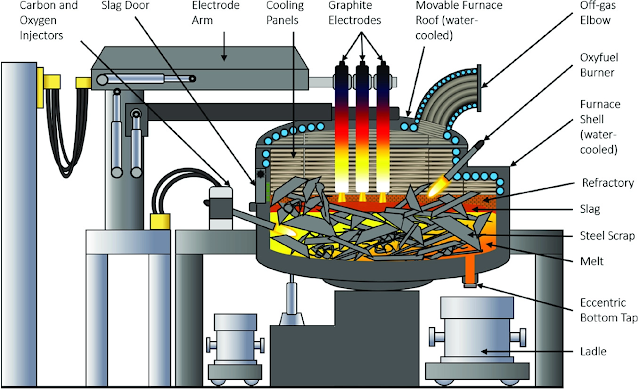Advantages of DC Arc Furnace
Electric arc furnace is a tool for steelmaking. Different kinds of electric arc furnaces have different steelmaking methods.
Electric arc furnace is a steelmaking electric arc furnace that uses DC power supply to supply electric energy. Like AC EAF, it uses the arc generated between electrode and charge (or molten pool) to generate heat, so as to achieve the purpose of melting, and can be used to melt steel or alloy.
Compared with the traditional AC EAF, the main advantages of DC EAF are as follows
(1) The results show that the arc is stable and concentrated, the bath is well stirred, the temperature distribution in the furnace is uniform, and the erosion of the furnace lining is less;
(2) The current and voltage fluctuations are small, the impact on the power grid is reduced, and the cable life is extended;
(3) The electrode consumption is 50% less than that of AC EAF. The performance of the DC electric arc furnace is better than that of the AC electric arc furnace, but it has been unable to obtain a high-power DC power supply, so it has not been developed for a long time.
With the application of thyristor technology, the manufacturing technology of high-power DC power supply equipment has been solved. So in the late 1970s, the metallurgical industry re-launched the research on DC electric arc furnace. By the early 1980s, the technical problems of DC electric arc furnace construction and use have been solved one by one. The world's first DC electric arc furnace was built and put into operation in 1982 at Bush steelworks in Germany. In the following, six or seven years, the United States, France, Italy, and Japan successively rebuilt or newly built their own DC electric arc furnaces, with capacities ranging from 30t to 60t. In 1989, the Tokyo Iron and Steel Company of Japan built the largest DC electric arc furnace with a capacity of 130t at that time. In recent years, many DC arc furnaces with capacity from 60t to 180t have been built and put into operation. In 1989, the first small DC electric arc furnace in China was developed and put into operation in Taiyuan machinery foundry. In the same year, a 2000kVA submerged arc DC electric arc furnace was put into operation in the Xuanhua ferroalloy plant to produce ferrosilicon, ferromanganese, calcium silicon, and other ferroalloys. Since the 1990s, more and more attention has been paid to DC EAF. Shanghai No.3 iron and steelworks, Changcheng iron and steelworks, Qiqihar iron and steelworks, Jiangyin Yanshan iron and steelworks, and Shanghai No.1 Iron and steelworks have successively introduced large DC EAF with a capacity of 80-100t. Baoshan Iron and steel (Group) Co., Ltd. imported a set of 150t DC EAF equipment with a double furnace shell (one power supply) from France.
There is only one electrode above the DC EAF, which is the negative electrode, and the bottom electrode is the positive electrode. Its power supply system is different from the AC arc furnace. It is equipped with a rectifier and reactor. Contacts are installed on the bottom of the furnace to form a current circuit. The maintenance and service life of the contacts are the key problems in the operation of the DC arc furnace. Generally, the copper plate is placed on the steel plate at the bottom of the furnace to facilitate conduction. Three layers of magnesia carbon bricks are laid on the copper plate, and then refractory materials are knotted on it.
Hani Tech is a Hot Rolling Mill manufacturing company working mainly in the area of the bar and wire rod mills, high-speed wire rod mills, high-speed rebar rolling mills, TMT rolling mills, flying shear, cold strip rolling mill, reheating furnace, induction furnace, intermediate frequency furnace, electric arc furnace, ladle refining furnace, blast furnace, continuous casting machine.
Free send inquiry to stella@hanrm.com if any needs.
Whatsapp/Wechat:+8615877652925
Website: https://www.hanrm.com
More News You May Interesting:
What are the Advantages and Disadvantages of Blast Furnace?
Characteristics of Electric Arc Furnace Steelmaking
Walking Beam Reheating Furnace VS Push-steel Reheating Furnace
Why Intermediate Frequency Furnace cannot be Turned on Normally?














.jpg)







